Situated in the rugged mountains of Catalonia, Montserrat Monastery is a timeless symbol of Spanish spirituality. Founded in the 11th century, it stands nearly 1,200 meters above sea level, offering breathtaking views of the surrounding landscape. This sacred site is best known for the statue of the Black Madonna, or La Moreneta, revered by pilgrims across the globe. Intricate architectural details and the solemn atmosphere underscore its centuries-old Benedictine tradition, attracting both religious devotees and curious explorers.
Quick Details About Montserrat Monastery
Opening Hours: online and €20 at the ticket office
Best Time To Visit: Spring (March to May) and fall (September to November)
Where To Stay: Montserrat Hotel & Restaurant, Abat Cisneros Hotel, Hotel Bruc
Where To Eat: Restaurant of the Monastery, Montserrat’s Cafeteria, Restaurant La Vinya Nova
Location
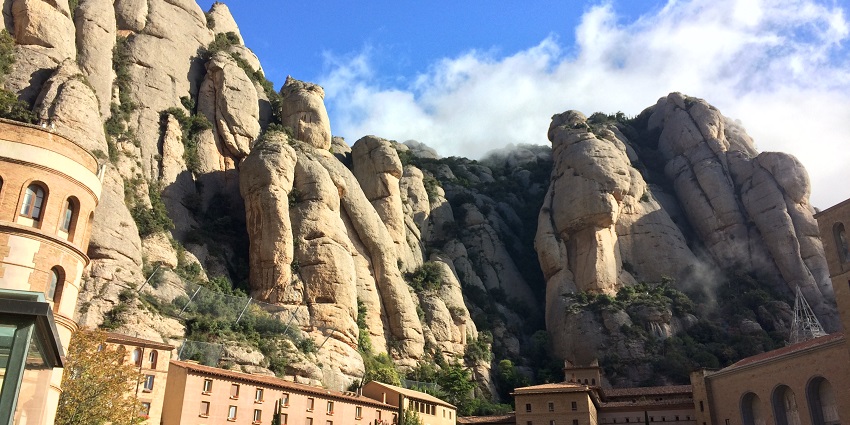
Photo: Orlith1 / Wikimedia Commons
Montserrat Monastery sits atop the Montserrat mountain range in Catalonia, about 60 kilometers northwest of Barcelona. Thanks to its proximity to major roads and well-managed transit, visitors can easily include it in broader Catalan adventures. Cable cars and funiculars connect the monastery to lower points, offering scenic ascents. Surrounded by dramatic rock formations, Montserrat’s setting is both remote and accessible.
How To Reach
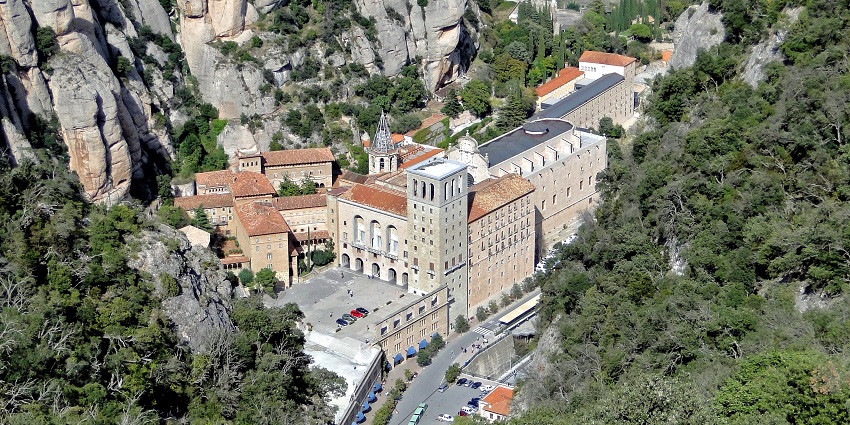
Photo: Bernard Gagnon / Wikimedia Commons
Tourists can reach Montserrat Monastery from central Barcelona through several convenient options:
By Train: A direct train from Plaça d’Espanya station leads to Montserrat-Aeri, where a cable car ascends to the monastery. Alternatively, remain on the train to Monistrol de Montserrat and switch to the rack railway.
By Car: Drive along the A-2 or C-58 highways, then follow signs for Montserrat. Parking is available near the complex, though spaces fill quickly during peak seasons.
By Buses: Regular day trips depart from Barcelona, often including round-trip transport, guides, and scenic viewpoints along the way.
Things To Do In Montserrat Monastery
1. Explore The Basilica
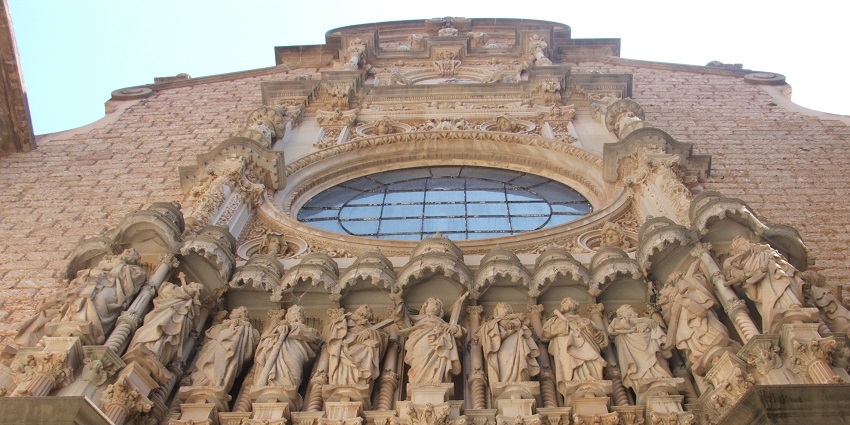
Photo: ABruszik / Wikimedia Commons
A central feature of Montserrat Monastery is its basilica, showcasing a blend of Gothic and Renaissance elements within a dramatic mountain setting. Visitors enter through a courtyard framed by ornate arches, then step inside to admire frescoes, gilded details, and soaring vaulted ceilings. Music resonates during Mass, accentuating the spiritual atmosphere. Stained-glass windows filter sunlight onto centuries-old stone floors, creating a warm, inviting glow. Historical plaques describe the abbey’s founding and growth over time, while side chapels offer quieter spaces for reflection.
2. Marvel At The Black Madonna

Photo: Tudoi61 / Wikimedia Commons
La Moreneta, or the Black Madonna, is the heart of Montserrat’s spiritual identity. Nestled behind the main altar, this small Romanesque statue attracts pilgrims who line up to touch or kiss its orb, seeking blessings and guidance. The chapel housing the Madonna is adorned with intricate mosaics, golden accents, and stained-glass windows recounting biblical events. The statue itself, believed to date back centuries, holds a compelling history steeped in legend. While waiting in line, visitors can observe votive offerings from devotees, each testifying to La Moreneta’s revered status.
3. Visit The Montserrat Museum
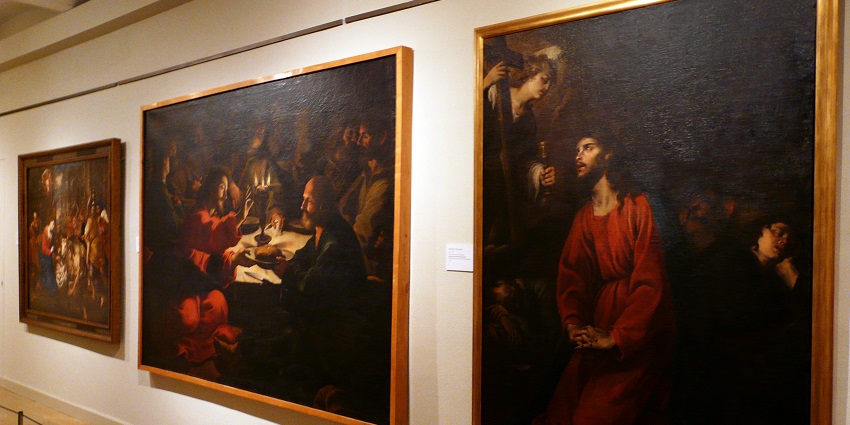
Photo: Михаил Бернгардт / Wikimedia Commons
Art enthusiasts will appreciate the Montserrat Museum, located just steps from the basilica. Inside, collections range from medieval religious art to modern pieces by Picasso and Dalí, reflecting Catalonia’s rich cultural tapestry. The museum also features artifacts tracing the monastery’s history, including precious metalwork, manuscripts, and liturgical objects. Quiet galleries and climate-controlled displays create a serene atmosphere for thoughtful exploration.
4. Listen To The Escolania Boys’ Choir
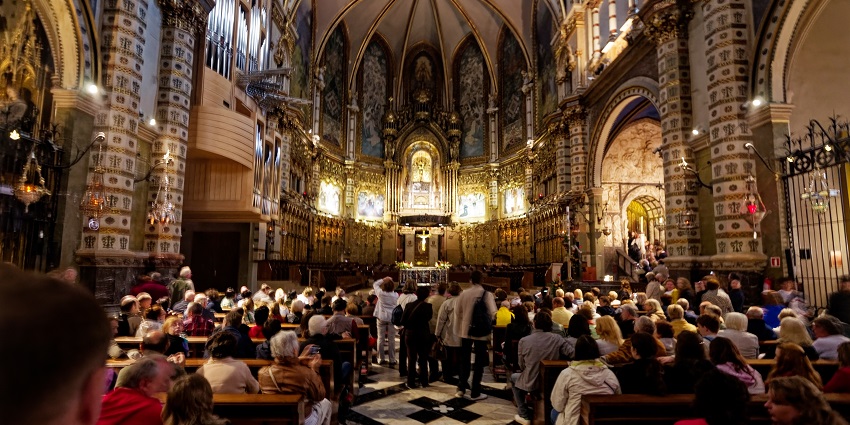
Photo: Txllxt TxllxT / Wikimedia Commons
Renowned across Spain, the Escolania is one of Europe’s oldest boys’ choirs, offering daily performances inside the basilica. Their angelic voices fill the sacred space with melodies that resonate against the ornate walls. Many visitors time their trips to catch these brief but transformative recitals, typically scheduled midday. Seating is limited, so arriving early is advisable, particularly on weekends and religious holidays. Listening to the choir provides not only a musical treat but also a glimpse into Montserrat’s ongoing traditions.
5. Walk The Paths To The Holy Grotto
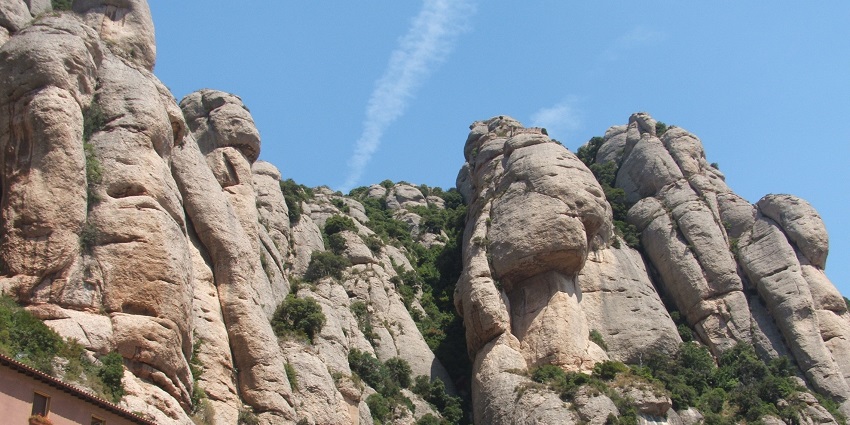
Photo: ABruszik / Wikimedia Commons
Beyond the basilica’s confines, a network of trails leads to the Holy Grotto (Santa Cova), traditionally believed to be where the Black Madonna was discovered. Shaded walkways meander through dramatic rock formations, occasionally revealing breathtaking viewpoints overlooking Catalonia’s valleys. Along the path, small chapels and sculptures invite reflection on the region’s deep spiritual heritage. The hike is moderate, with certain segments featuring steps and inclines, so comfortable footwear is recommended.
Places To Visit Near Montserrat Monastery
From scenic peaks to hidden chapels, here are some must-see spots around this revered mountaintop abbey.
1. Sant Jeroni Peak
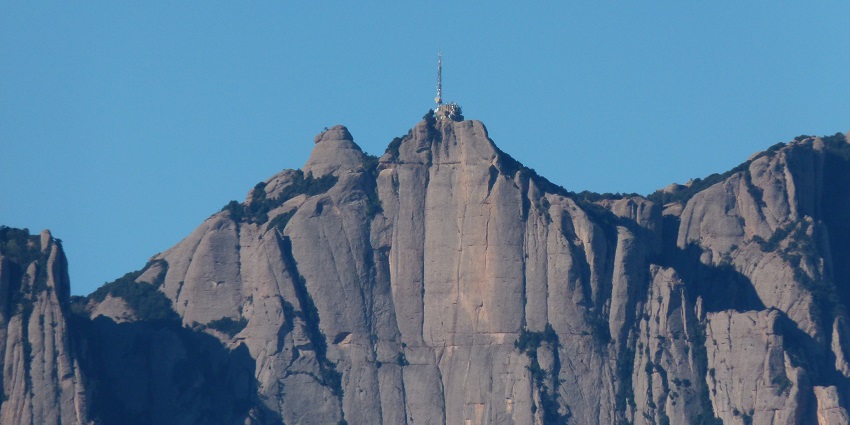
Photo: Pere López Brosa / Wikimedia Commons
Sant Jeroni is the highest summit of Montserrat, rising to about 1,236 meters. Adventurous visitors embark on a hike that begins near the monastery and winds through rocky trails and forested sections. The climb can be challenging, but the panoramic rewards are unparalleled: on clear days, you might glimpse the Pyrenees and the Mediterranean coast. Along the route, stone staircases and metal handrails assist with steeper sections. A small lookout near the top provides a place to rest and soak in the sweeping vistas.
Things To Do: Hike the peak, photograph scenic vistas, enjoy fresh mountain air
2. Funicular De Sant Joan
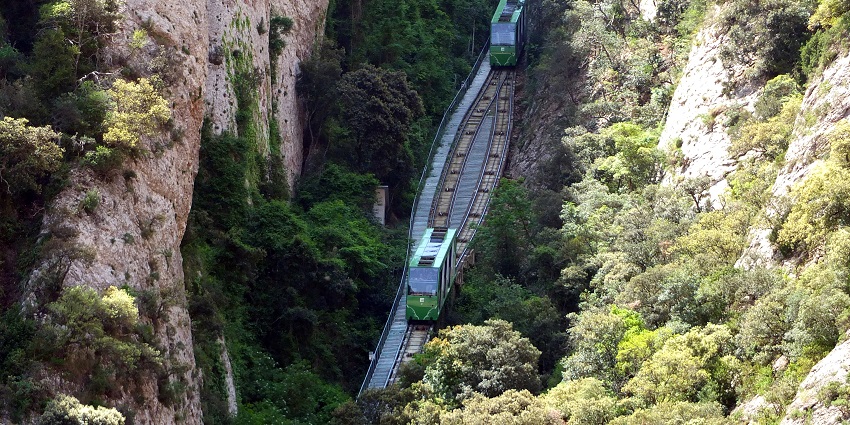
Photo: Ad Meskens / Wikimedia Commons
Located near the main complex, the Funicular de Sant Joan whisks passengers up the steep mountainside. Offering a short but scenic ride, its glass-paneled cabins reveal dramatic rock formations and lush valleys below. At the upper station, visitors can explore walking trails leading to picturesque viewpoints. Informational panels detail local geology, flora, and fauna, enriching the experience. The area around Sant Joan also provides access to small hermitages hidden among the crags.
Things To Do: Ride the funicular, walk the trails, learn about local ecology
3. Santa Cova Chapel
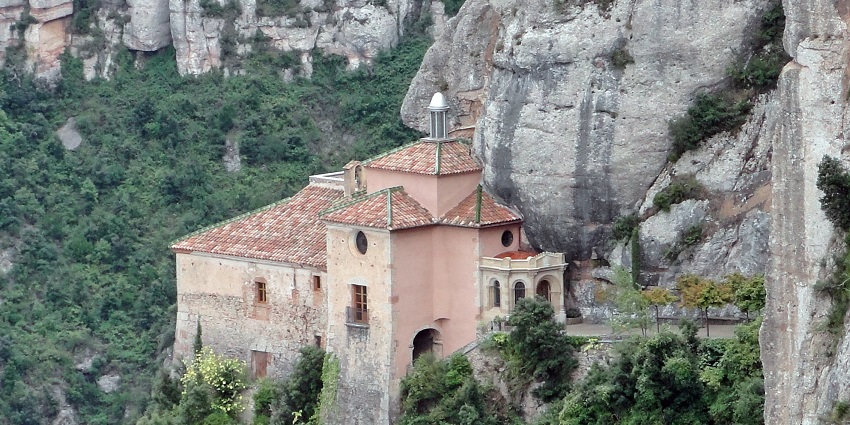
Photo: Bernard Gagnon / Wikimedia Commons
For those who want a gentler walk, the path to Santa Cova Chapel diverges from the main monastery area. The route is lined with sculpted mysteries illustrating the Rosary, each created by noted Catalan artists. These stoneworks lead to a chapel built within a natural cave, underscoring Montserrat’s fusion of faith and nature. Legend holds that the Black Madonna was originally discovered here, infusing the spot with spiritual importance. Gentle inclines make this walk accessible, though a few steps may be involved.
Things To Do: Enjoy a contemplative stroll, view religious sculptures, visit the cave chapel
4. Monistrol De Montserrat
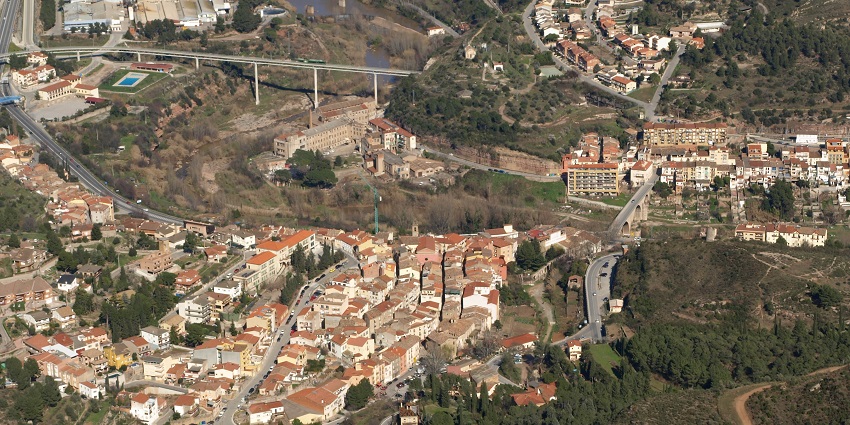
Photo: Elemaki / Wikimedia Commons
Situated at the mountain’s base, Monistrol de Montserrat is the gateway town for many pilgrims and day-trippers. Its narrow streets and stone buildings evoke a traditional Catalan charm, and small plazas offer glimpses of local life. Many visitors stop here for refreshments before taking the rack railway or hiking up to the monastery. Highlights include the 18th-century parish church and the scenic riverfront along the Llobregat. Cafés serve hearty regional dishes, while shops offer souvenirs and artisanal products.
Things To Do: Explore local streets, dine on Catalan cuisine, catch the train to Montserrat
5. Montserrat Natural Park Trails
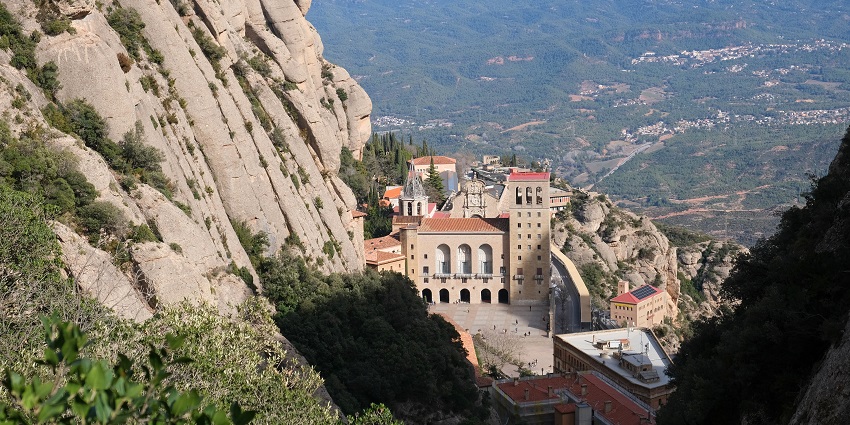
Photo: kallerna / Wikimedia Commons
Beyond the well-known paths to the monastery and grotto, Montserrat Natural Park harbors extensive trails across limestone peaks and wooded valleys. Hikers can choose routes of varying difficulty, from leisurely strolls to more strenuous ascents. Panoramic overlooks abound, showcasing the rugged contours that gave the mountain its name (meaning “serrated” in Catalan). Observant explorers might spot endemic plants or rare birds nesting on rocky ledges. An early start is recommended, particularly during warmer months when midday heat can be intense.
Things To Do: Discover hidden trails, admire mountain flora and fauna, find secluded viewpoints
Other Factors To Consider
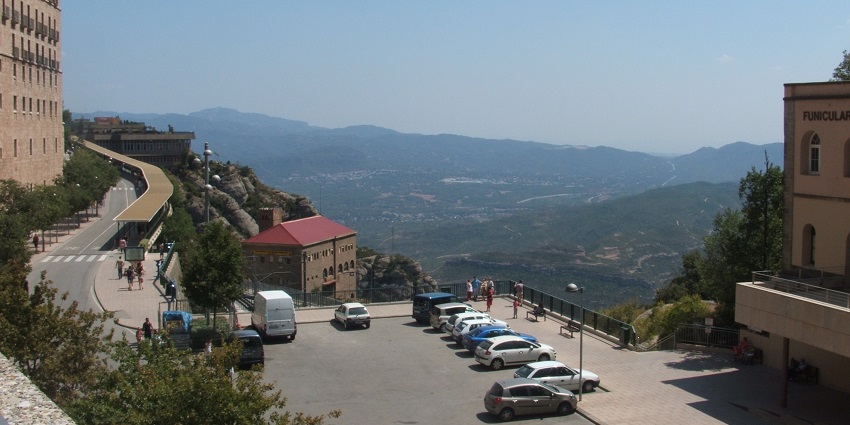
Photo: ABruszik / Wikimedia Commons
Average Cost Of The Trip
The average cost of a trip to Montserrat Monastery includes transportation, entry fees, and food. From Barcelona, a round-trip train ticket costs about €20-30 (1,750-2,600 INR). Entry to the monastery is free, but cable car rides are around €10 (875 INR). Budgeting around €50-70 (4,375-6,125 INR) per person for a complete experience is reasonable.
Tips For Travellers
- Expect more visitors on weekends and during peak pilgrimage seasons.
- Mornings can be cool at higher altitudes, so dress in layers.
- Plan enough time to savor every corner of Montserrat Monastery, focusing on its basilica, sacred statues, and the museum if possible.
- Wear sturdy shoes for mountainous terrain, and dress modestly inside the worship areas.
- An audio guide or prior reading on Catalan monastic history deepens your appreciation of this revered locale.
- Sample traditional Catalan fare in local cafés or the on-site cafeteria.
Montserrat Monastery stands as a living testament to Catalonia’s religious devotion and historical richness. Its lofty basilica, venerated Black Madonna, and surrounding museums invite exploration of centuries-old traditions set against a dramatic natural backdrop. For travelers seeking both spiritual resonance and breathtaking vistas, Montserrat delivers in every sense. Its rugged grandeur remains unmatched, reflecting the region’s quest to merge the divine with the sublime. Plan ahead with TripXL, arrive early, and immerse yourself in a timeless Catalan sanctuary.
Cover Photo: Bernard Gagnon / Wikimedia Commons


 WhatsApp
WhatsApp
 Twitter
Twitter









